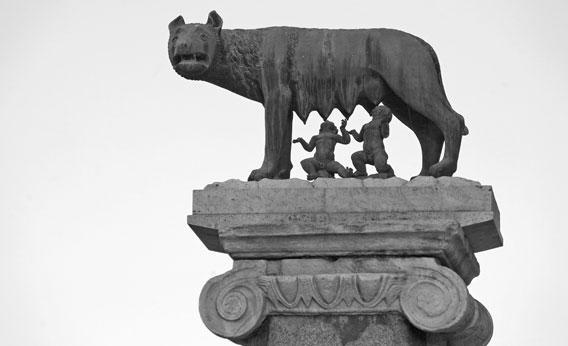Last time, we talked about the new science of milk and the work of Katie Hinde, who studies lactation in rhesus macaques. Her research is remarkable, but its focus is not unusual. Scientists have always been interested in how other mammals lactate, even species that have little light to shed on our own. We know the fat content of elephant seal milk, for example. (It’s basically fatty fat with fat sauce.) But our interest in the lactation of other animals extends well beyond studying it. For a lot of history, we’ve had a much more intimate relationship with the subject. I’m not talking about babies being fed cow’s milk. I’m talking about babies nursing from cows.
This didn’t happen all that often, in truth: Babies are small and fragile; cows are enormous. So goats were a better bet. To wit: The Goat as The Best and Most Agreeable Wet Nurse, published in 1816, by a Conrad A. Zwierlein. In the 19th century, there were hospitals in France with goats effectively on staff. Infants fed on their milk were slid under the goats on wooden trays built for that purpose. They were said to do well, and given that many infants not being fed breast milk died from poor sanitation, it was probably safer to go straight to the source, without any germ-infested buckets and pots getting in the way. (At the time, the biggest worry about baby/goat nursing wasn’t that the infant would be injured by the goat; it was that the infant would grow up goatlike.) This wasn’t exactly common but it was by no means rare: as I write in Baby Meets World, even Montaigne, from his home in the French countryside, took note of it.
The milk flow went in the other direction, too: Humans nursed other species. In the highlands of New Guinea, women nursed orphaned piglets; in South America, they breastfed baby deer, opossums, monkeys; in Japan, the Ainu people were said to suckle bear cubs. Adoptive mothers used the infants of other species to induce lactation. There are numerous accounts of puppies at work: For centuries in England, puppies were used to suck out a mother’s first milk, which physicians at the time thought was tainted. (Puppies were also called on in cases of engorgement.) When Turkish wet nurses traveled overseas for work, they brought puppies along to stimulate their milk production. The puppies were, in a sense, breast pumps. Walking, wagging breast pumps.
***
Nicholas Day’s book on the science and history of infancy, Baby Meets World, will be published in April. His website is nicholasday.net.
